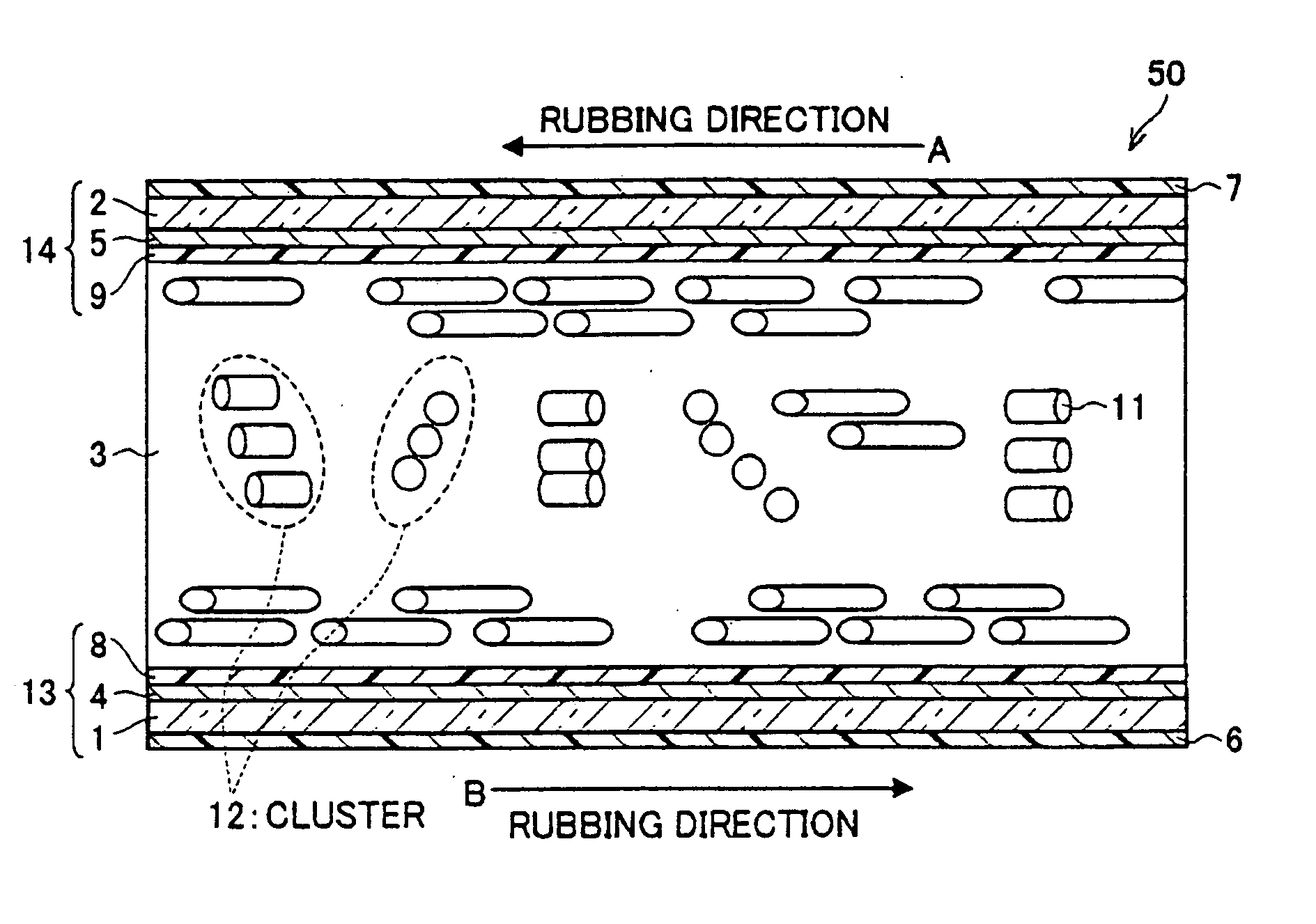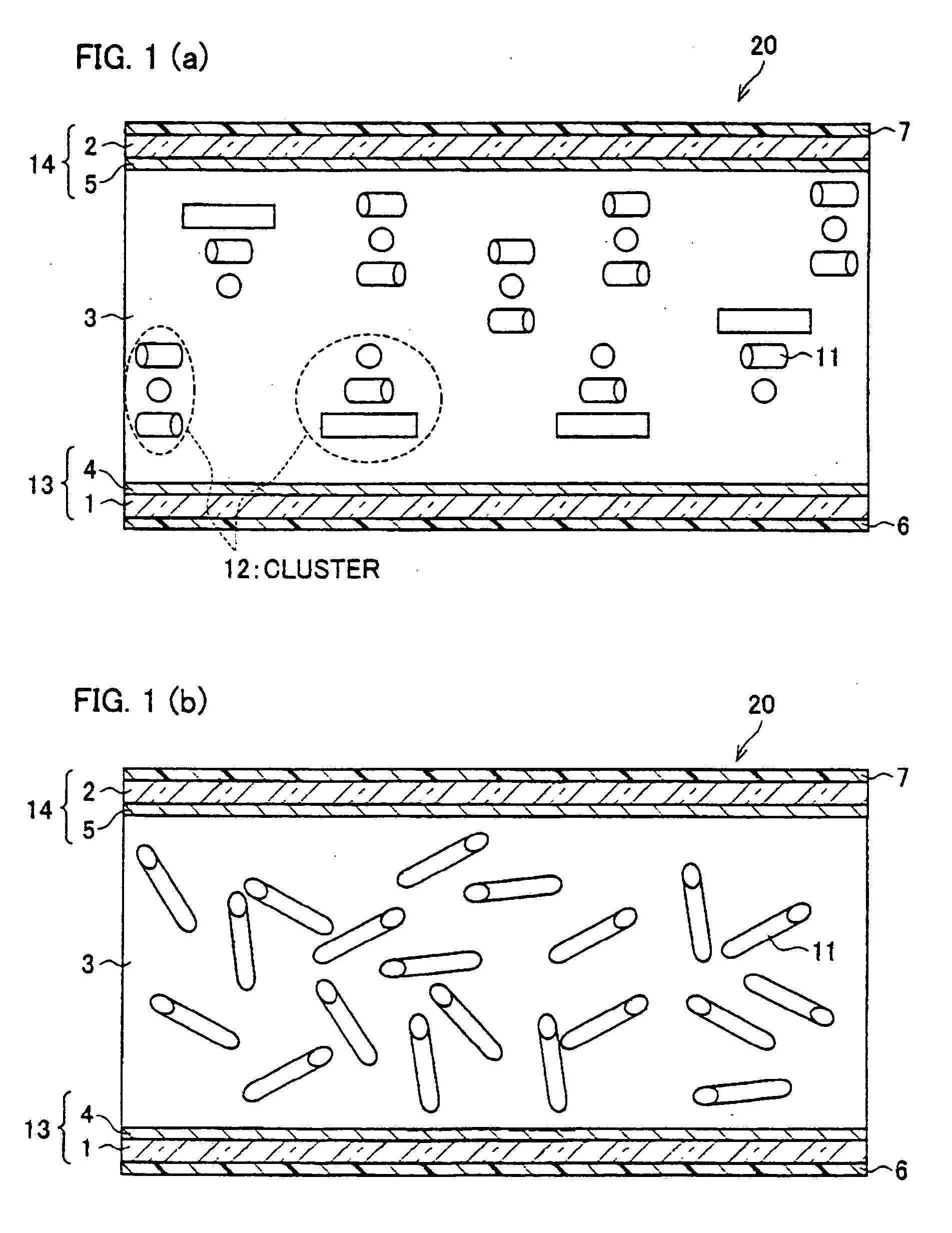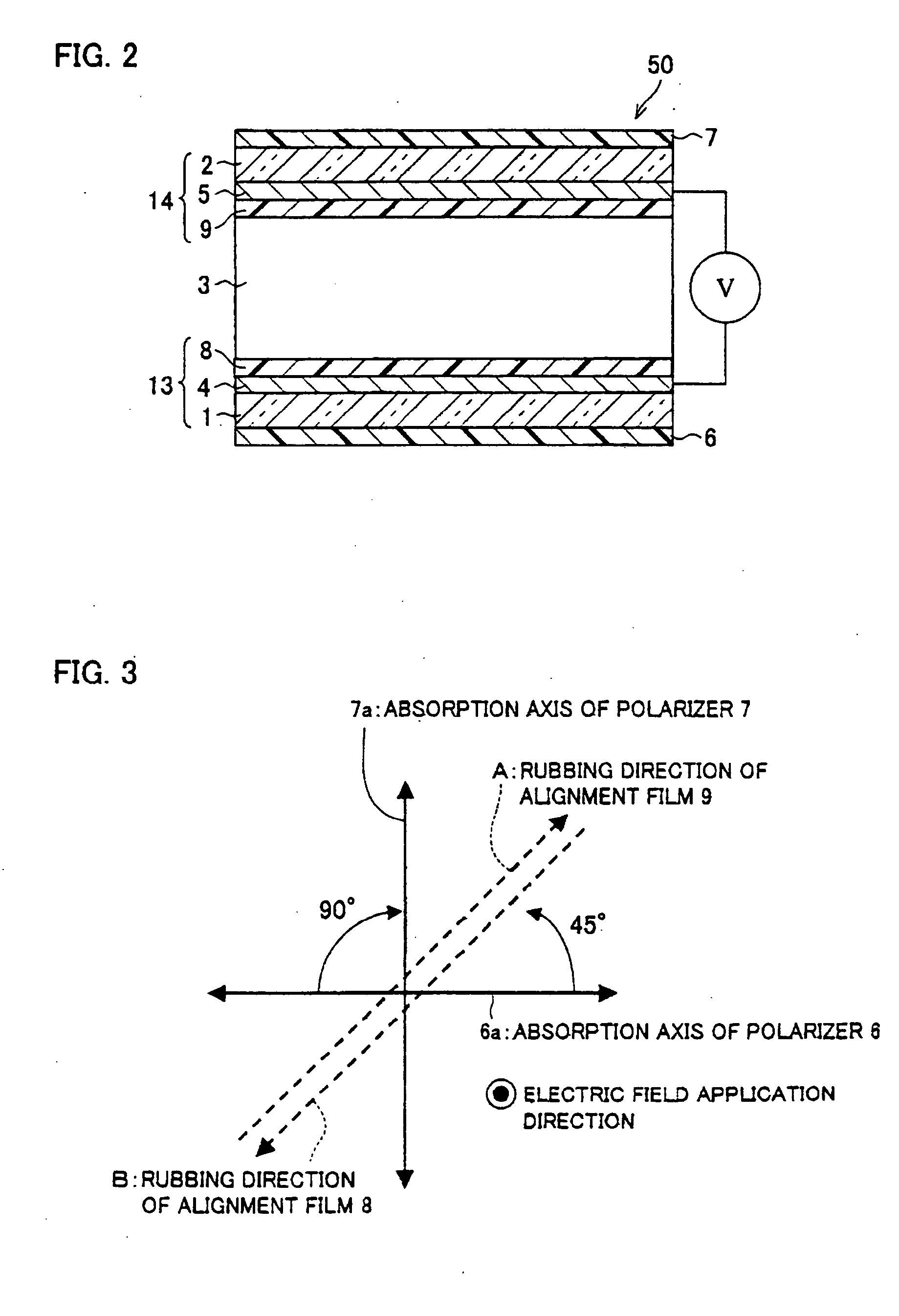Display element and display device
a display element and display device technology, applied in liquid crystal compositions, instruments, chemistry apparatus and processes, etc., can solve the problems of slow response of liquid crystal display elements using tn mode, large hindrances of tn mode, narrow viewing angle, etc., to reduce the effect of coloring phenomenon, reduce the driving voltage, and improve contras
- Summary
- Abstract
- Description
- Claims
- Application Information
AI Technical Summary
Benefits of technology
Problems solved by technology
Method used
Image
Examples
Embodiment Construction
[0067] A non-limiting, example embodiment is described with reference to FIGS. 1 to 17. FIGS. 1(a) and 1(b) are schematic cross sectional views schematically illustrating an arrangement of a display element according to an example implementation of the present embodiment. FIG. 1(a) illustrates the display element when an electric field is applied between the substrates and FIG. 1(b) illustrates the display element when no electric field is applied. Moreover, FIG. 5 schematically illustrates an arrangement of various parts of a display device in which the display element according to the present embodiment is used. FIG. 6 schematically illustrates an arrangement of a periphery of the display element used in the display device illustrated in FIG. 5.
[0068] The display element according to the present embodiment can be used in a display device. A driving circuit, signal lines (e.g., data signal lines), scanning lines (e.g., scanning signal lines), switching elements or the like are als...
PUM
 Login to View More
Login to View More Abstract
Description
Claims
Application Information
 Login to View More
Login to View More - R&D
- Intellectual Property
- Life Sciences
- Materials
- Tech Scout
- Unparalleled Data Quality
- Higher Quality Content
- 60% Fewer Hallucinations
Browse by: Latest US Patents, China's latest patents, Technical Efficacy Thesaurus, Application Domain, Technology Topic, Popular Technical Reports.
© 2025 PatSnap. All rights reserved.Legal|Privacy policy|Modern Slavery Act Transparency Statement|Sitemap|About US| Contact US: help@patsnap.com



